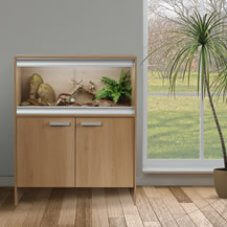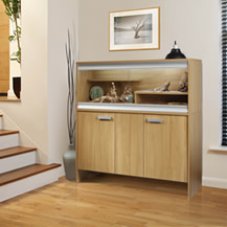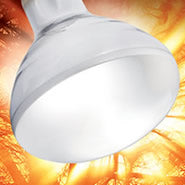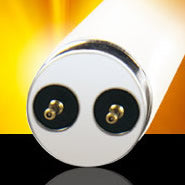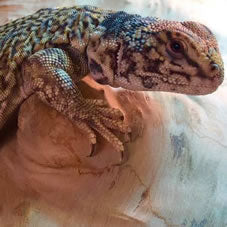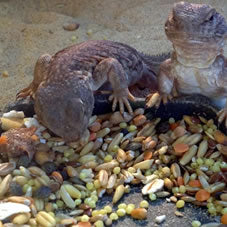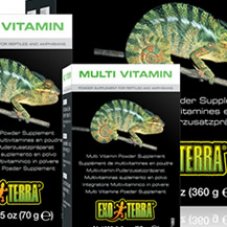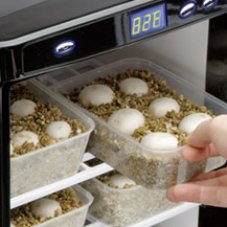Free Delivery
On order over £99*
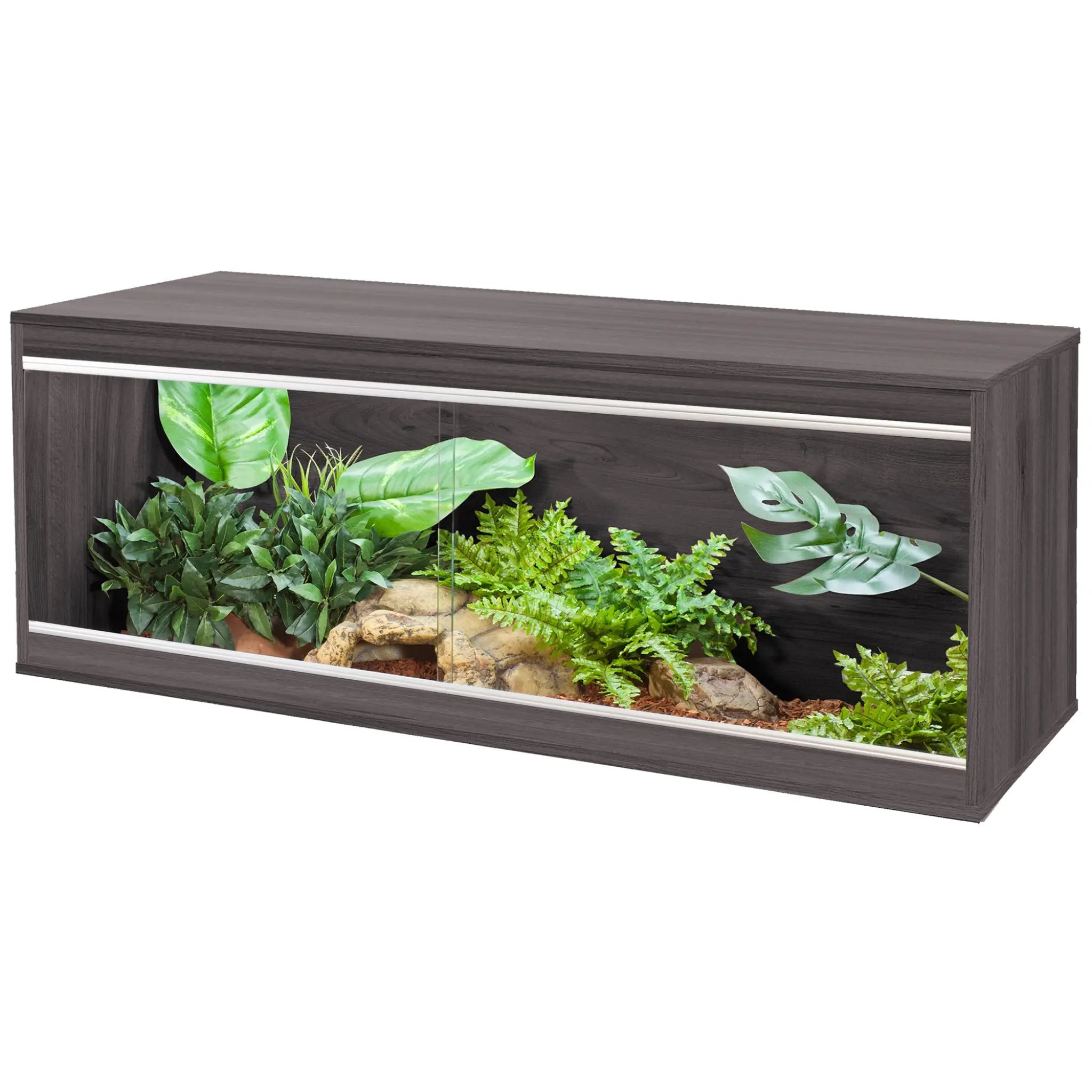


Scientific Name: Uromastyx acanthinura

Country of Origin: Africa

Potential Adult Size: 30cm (10-12 inches)

Average Life Span: Average 15 years

Dietary Requirements: Omnivorous

Other Names: Spiny-tailed lizard, Mastigures, Bell's dabb lizard
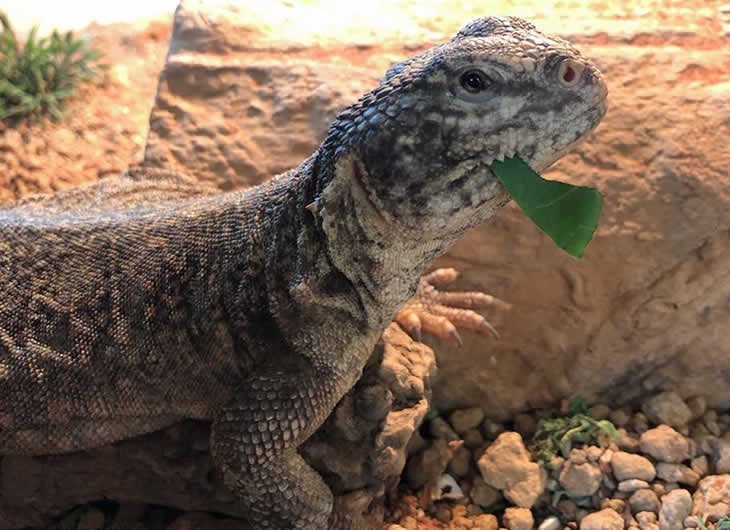
The Moroccan Uromastyx is a beautiful little lizard commonly found in Africa. They have a frog-like face, a short spiked tail and very small scales compare to other agamids. They are quite long-lived with individuals recorded at 30 years old but with a more average lifespan of 15 years.
They have become much more popular recently due to their ease of care. Unlike similar lizards, they don't require nearly as much water or live insects to remain healthy. They are also reported to be smarter than the average lizard and more interactive.
Often seen climbing upon rocky outcrops and hiding in the cracks. When threatened they have been known to climb into a gap and block the entrance with their spiked tail.

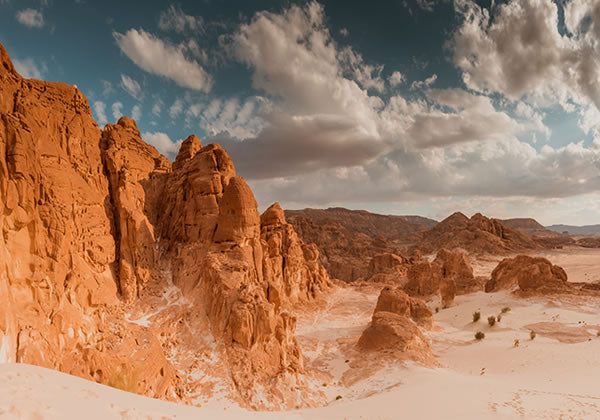
Uromastyx come from a very warm and dry environment so they struggle with the cold and humidity of the UK. To insulate against both of these factors we recommend keeping the uromastyx in a wooden vivarium. Due to the temperature gradient required we would normally select an enclosure as close to 4 x 2 x 2ft as possible with large vents and glass sliding front doors.
All of this ventilation should ensure that heat is lost from one side of the enclosure to the other while keeping the basking spot itself at a consistent temperature.
Uromastyx do not tend to be a shy species so we would use this size enclosure for the uromastyx from when it is very young. To make sure there is not too much open space for a juvenile we provide a lot more decorations to begin with and slowly remove them as the lizards grows.
Naturally, uromastyx spend a long time basking in the full heat of the sun. As such they require a very warm basking area of 100 to 120of during the day. We try to provide this heat over 1/3 of the enclosure while letting the rest of the enclosure cool to 80of on the opposite side. To achieve this we attach a strong basking lamp to the ceiling of the enclosure on one side. This is controlled by a dimming thermostat to make sure that the temperature is kept correct throughout the day. The basking lamp is left on for 10-12 hours per day.
At night, all of the lights should go off and the enclosure should be completely dark. This should make sure that the uromastyx has a clear day night cycle.
Though the thermostats we sell are very reliable it is always best practise to monitor your temperatures with a thermometer. A 5of variance on the basking spot is nothing to worry about as long as your cool side is still cool. A simple dial thermometer on each side should be sufficient but digital probe thermometers are much more accurate.
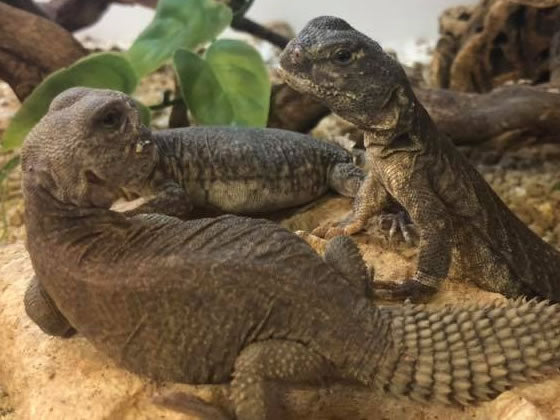
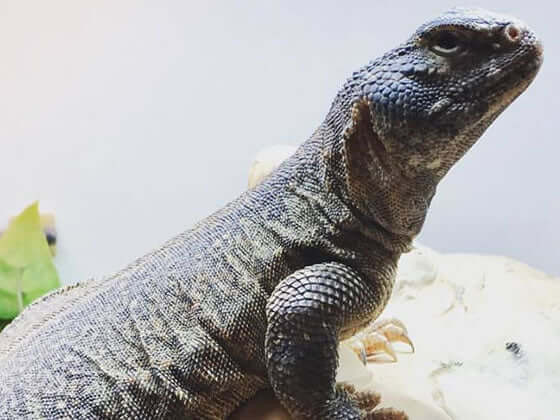
Moroccan uromastyx are a full time basking species by nature so they need an intense UVB source. We recommend a strong 10-12% UV tube running at least 2/3 of the length of the enclosure. In some cases we may increase the strength of the lamp depending on how tall the enclosure is however, in a normal 4 x 2 x 2ft vivarium the 10-12% should be suitable.
UV tubes are currently available in 2 sizes, T8 and T5. The T8 lamps are around 1 inch in diameter, they must be replaced every 6 months or so and they have an effective range of 9-12 inches. T5 lamps are the newer iteration. They are around half an inch in diameter, last 12 months and have an effective range of 18-24 inches.
Whichever lamp you choose we would advise mounting it to the ceiling, close to the back wall. This should provide a nice UV gradient from the back of the enclosure towards the front. In this configuration we achieve a temperature gradient along the length and a UV gradient along the width meaning that whatever the uromastyx requirements they can find the perfect position within the enclosure.
Though the uromastyx is a basking species it may desire some time in an area with no light. To achieve this we would provide partial and full hiding spots throughout the enclosure.
Uromastyx thrive in a low humidity environment with hard decorations to climb over and bask on. When selecting a bedding we try to ensure that the pieces are unlikely to stick to the lizards food, and are not going to increase the enclosures humidity. In store we normally use a coarse beech woodchip as it is clean, cheap, easy to spot clean and dust free. If you prefer a more natural looking decoration a sand / soil / clay mix would be perfect. If you plan to keep the uromastyx in a bio-active enclosure a nutrient rich soil and clay mix with some sand for aeration would be perfect.
Though the uromastyx has a temperature gradient running from side to side which we will be keeping at the correct temperatures there are times when the uromastyx will want to get really hot. To allow this we use dry hard wood decorations like java wood or grapevine pieces situated near the warm end but far enough from the lamps that the uromastyx is not at risk of coming into contact with the basking lamp. The uromastyx will climb its decoration to get to a hotter part of the enclosure.
Uromastyx love the warmth coming from their basking lamp but they also appreciate secondary belly heat which will radiate from warm objects. Natural rocks like slate are perfect for this, so are heavy artificial ornaments. These decorations can be placed under and around the basking area and should warm up nicely. If the lamp is too low there is a chance that natural rocks could get too hot so you are best to check the surface temperature to avoid burns.
As discussed in the lighting section there will be times when the uromastyx does not want any UV and needs a bit of shade. To ensure that the uromastyx can get away from the light whenever necessary we advise spreading full and partial cover throughout the enclosure. Examples of full cover decorations would be caves, flat cork pieces or any other ornament that provides a shady spot to rest. Examples of partial cover would include tall plants, trailing plants and themed ornaments like skulls or cactus skeleton.
Uromastyx are omnivorous meaning that they can eat a varied diet of vegetables, seeds and insects. Normally, this species is kept as a herbivore and provided fresh salad daily and a bowl of dry seeds. Live foods are offered very rarely and only as a treat.
For the vegetable portion of the diet we recommend spring greens, curly kale and Italian herb mix as the base of the salad. Grated carrot, parsnip or courgette can be added for additional textures and chopped bell peppers can be added to provide colour to the salad and make it more enticing for the uromastyx. Vegetables to avoid include onion, peas, spinach, iceburg lettuce and anything else that might be acidic or could swell with moisture. A few times a week it is advised that some roughage is added to the salad. Various weeds or plants like plantain, dandelion, chick weed can be chopped up and added to the top of the salad. Alternatively dry herb cobs or flower mixes can be rehydrated and mixed into the salad.
Both the food dish and water bowl should be kept on the cool side of the enclosure to prevent them from raising the humidity in the enclosure.
Uromastyx will get most of what they need from their diet but there are some vitamins and minerals that they require in higher concentrations. These are normally provided in the form of calcium and vitamin powders which are dusted onto the live food and sprinkled onto the salad.
There are many brands and types of supplement but normally they come down to a pure calcium, calcium and vitamin or vitamin only supplement. Within these groups they will also either include or exclude synthetic vitamin D3. Vitamin D3 is produced by the reptile when it is exposed to UVB and among other functions it allows the uromastyx to use the calcium in their diet. If you are sure that the UVB levels in your enclosure are perfect you can use a supplement without D3, if you are nor sure it would be best to use a supplement with some D3.
In our store we currently use a simple calcium powder with D3 and a balanced multi-vitamin with D3 called nutrobal. For most of the animals we alternate these daily so that they get their vitamins every other day while getting calcium every day.
If you keep a male and female together, they may breed. You do not need to do anything to encourage this. As long as they are healthy and the conditions are good, it will happen naturally. You need to consider whether you want this to happen before introducing the pair. What will you do with the babies if you incubate the eggs?
A gravid female should have access to a nesting box to lay her eggs. The box should be large enough that she can fully turn-around inside it. Inside the nesting box we use a soil mix that is kept humid enough to hold its shape but not so wet that it will saturate any eggs. We have found that ProRep spider life is perfect for this.
Once laid, the eggs should be incubated in an incubator at 84oF. We incubate our eggs in sealed boxes on a moisture rich substrate (such as Hatchrite) to trap the humidity around the eggs. After approximately 60 days the eggs will start to hatch, the first babies to emerge will encourage the rest of the eggs to hatch.
Moroccan uromastyx, as with most pets, require a clean environment to thrive. We recommend a spot clean as often as possible (every day) and a full clean every 4 weeks or so. If you are keeping the uromastyx in a bio-active enclosure you can spot clean and monitor the enclosure. It may still be a good item to change out the bedding a few times per year.
When cleaning the enclosure you should remove your animal, all decorations and all of the bedding. Once the enclosure is clear you can spray it all over with a reptile friendly disinfectant. These usually work very quickly and only need to be left for around 30 seconds, instructions can normally be found on the disinfectants packaging. Once the disinfectant has done its work it can be wiped away from the surfaces with a paper towel. In some cases you might want to repeat this process a second time to ensure that the enclosure is thoroughly cleaned.
Your decorations can be cleaned in a similar method, simply spray them down with the disinfectant and rinse thoroughly with water before drying them off and putting them back into the enclosure. We recommend this process is done during the day time to make sure that the uromastyx will be going back to a warm vivarium for at least an hour before the basking lamps are turned off for the night.
Sign up to the Reptile Centre newsletter so you don't miss out on all the latest offers and guides to give your pet the best they deserve


